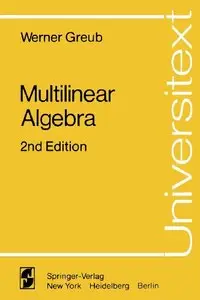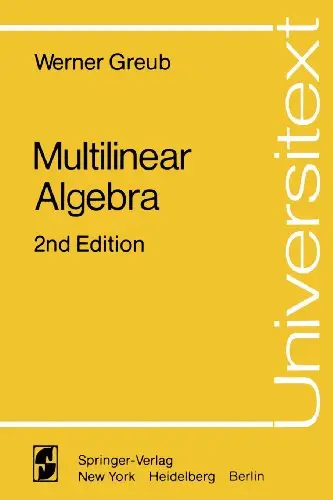Werner Greub, "Multilinear Algebra, 2nd edition"
1978 | ISBN-10: 0387902848 | 308 pages | Djvu | 2 MB
1978 | ISBN-10: 0387902848 | 308 pages | Djvu | 2 MB
Preface
This book is a revised version of the first edition and is intended as a sequel and companion volume to the fourth edition of Linear Algebra (Graduate Texts in Mathematics 23).
As before, the terminology and basic results of Linear Algebra are frequently used without reference. In particular, the reader should be familiar with Chapters 1-5 and the first part of Chapter 6 of that book, although other sections are occasionally used.
In this new version of Multilinear Algebra, Chapters 1-5 remain essentially unchanged from the previous edition. Chapter 6 has been completely
rewritten and split into three (Chapters 6, 7, and 8). Some of the proofs have been simplified and a substantial amount of new material has been
added. This applies particularly to the study of characteristic coefficients and the Pfaffian.
The old Chapter 7 remains as it stood, except that it is now Chapter 9.
The old Chapter 8 has been suppressed and the material which it contained (multilinear functions) has been relocated at the end of Chapters 3,
5, and 9.
The last two chapters on Clifford algebras and their representations are completely new. In view of the growing importance of Clifford algebras
and the relatively few references available, it was felt that these chapters would be useful to both mathematicians and physicists.
In Chapter 10 Clifford algebras are introduced via universal properties and treated in a fashion analogous to exterior algebra. After the basic
isomorphism theorems for these algebras (over an arbitrary inner product space) have been established the chapter proceeds to a discussion of
finite-dimensional Clifford algebras. The treatment culminates in the complete classification of Clifford algebras over finite-dimensional complex
and real inner product spaces.
The book concludes with Chapter 11 on representations of Clifford algebras. The twisted adjoint representation which leads to the definition
of the spin-groups is an important example. A version of Wedderbum's theorem is the key to the classification of all representations of the Clifford
algebra over an 8-dimensional real vector space with a negative definite inner product. The results are applied in the last section of this chapter to
study orthogonal multiplications between Euclidean spaces and the existence of orthonormal frames on the sphere. In particular, it is shown that
the (n — l)-sphere admits an orthonormal A>frame where k is the Radon-Hurwitz number corresponding to n. A deep theorem of F. Adams
states that this result can not be improved.
The problems at the end of Chapter 11 include a basis-free definition of the Cayley algebra via the complex cross-product analogous to the definition of quaternions in Section 7.23 of the fourth edition of Linear Algebra.
Finally, the Cayley multiplication is used to obtain concrete forms of some of the isomorphisms in the table at the end of Chapter 10.
I should like to express my deep thanks to Professor J. R. Vanstone who worked closely with me through each stage of this revision and who made
numerous and valuable contributions to both content and presentation. I should also like to thank Mr. M. S. Swanson who assisted Professor
Vanstone and myself with the proof reading.
–W. H. Greub



